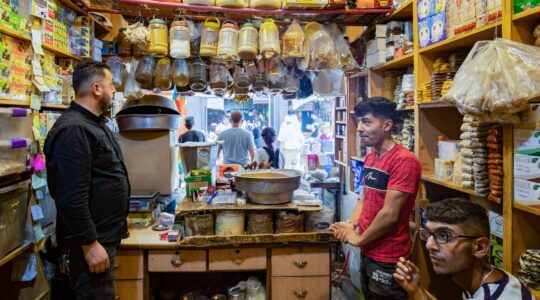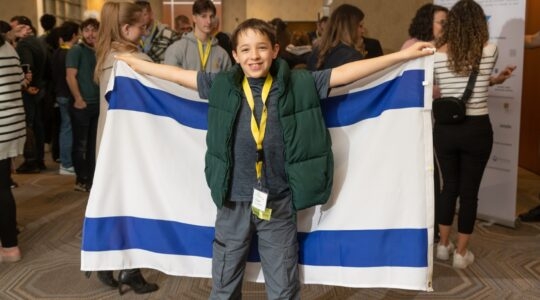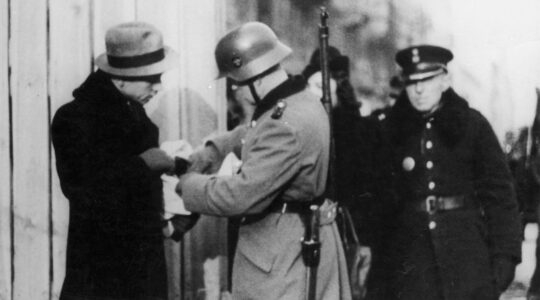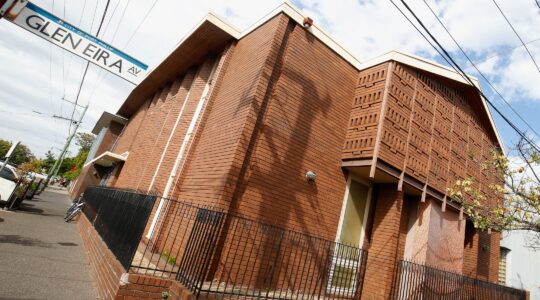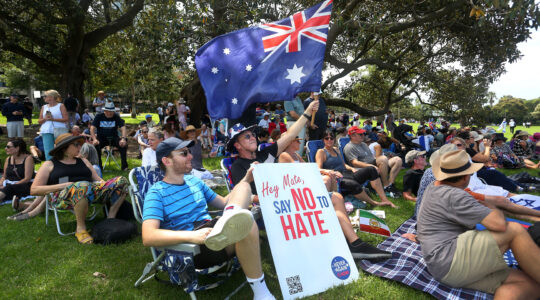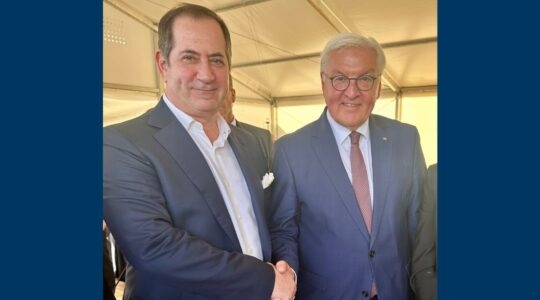BRATISLAVA, Slovakia (JTA) — In 1989, on the eve of the fall of communism, the American poet Jerome Rothenberg published a powerful series of poems called “Khurbn” that dealt with the impact of the Holocaust on Eastern Europe.
In one section, he recorded conversations he had had in Poland with local people who had little recollection of the flourishing pre-war Jewish presence.
“Were there once Jews here?” the poem goes. “Yes, they told us, yes they were sure there were, though there was no one here who could remember. What was a Jew like? they asked.
“No one is certain still if they exist.”
I often think of this poem when I travel to far-flung places in Eastern and Central Europe, and it was certainly on my mind on a trip to Slovakia this August.
That’s because yes, there are still Jews here, and the post-Communist revival has reinvigorated Jewish communities in the region.
But also, despite this, numbers are still so small that even in many places where Jews once made up large parts of the population, Jewish history and heritage have been, or run the risk of being, forgotten.
“Look,” my friend Maros Borsky reminded me in Bratislava. “Kids who were born after 1989 don’t even remember communism.”
Borsky is trying to do something about this — which is why I was in Slovakia.
The vice president of the Bratislava Jewish community, Borsky is also Slovakia’s leading Jewish scholar and expert on Slovak Jewish heritage. At 37 he is the leading Slovak Jewish activist of his generation, engaged in everything from religious, cultural and educational initiatives to his own personal commitment to raising his daughters in a Jewish home.
“I’ll do anything to support his efforts, he has made such a difference to Jewish life here,” said Andrew Goldstein, a British Reform rabbi who has played a hands-on role in nurturing Jewish revival in the Czech Republic and Slovakia for more than two decades.
Now chairman of the European Union for Progressive Judaism, Goldstein comes to Bratislava once a month to hold classes and lead a non-Orthodox Shabbat service as an alternative to the one conducted by the city’s only resident rabbi, Baruch Myers, who is affiliated with Chabad.
Goldstein and I met in Bratislava nearly six years ago when he officiated at Borsky’s wedding. This time, Goldstein and his wife and I, along with half a dozen Israeli journalists, were on a five-day tour that Borsky led to Jewish communities and heritage sites around the country.
The aim was to introduce the Slovak Jewish Heritage Route, an educational and touristic itinerary Borsky devised as a means of integrating Jewish heritage and memory into local tourism, culture and education so that Jews, their history and their fate are not forgotten.
I have followed the development of the route ever since Borsky first conceived it five years ago, and I believe it is an important strategic endeavor that could provide a model for other countries. Only 3,000 Jews live in Slovakia today, but there are synagogue buildings or Jewish cemeteries in literally hundreds of towns and even major cities. The Slovak Jewish community does not have the resources to save or even to care for all these places.
So Borsky convinced communal leaders to sanction a strategy that concentrates on just a few. This resulted in his Slovak Jewish Heritage Route, which includes 24 flagship sites in all eight regions of the country: mainly synagogues, but also Jewish cemeteries, Holocaust memorials and museums. They are marked with plaques bearing a distinctive logo.
Each was chosen for its historic or architectural significance but also for its sustainability. This does not mean, of course, that other sites should be forgotten. But to be included on the route, there must be a partnership in place with a local body to ensure long-term care and maintenance.
Our tour took in more than a dozen of the sites: from the active synagogue in Bratislava to Presov in the far east, where the magnificence of the surviving synagogue utterly dwarfs the potential of a Jewish community that now numbers only a few dozen people.
We saw synagogues used as art galleries, and one now used as an art school. There were little Jewish exhibits, and ruined synagogues still undergoing repair. In one of these, the partially ruined synagogue in Liptovsky Mikulas, Goldstein and his wife stopped to chant prayers so that the sounds of Jewish liturgy could once again be heard.
JTA has documented Jewish history in real-time for over a century. Keep our journalism strong by joining us in supporting independent, award-winning reporting.
